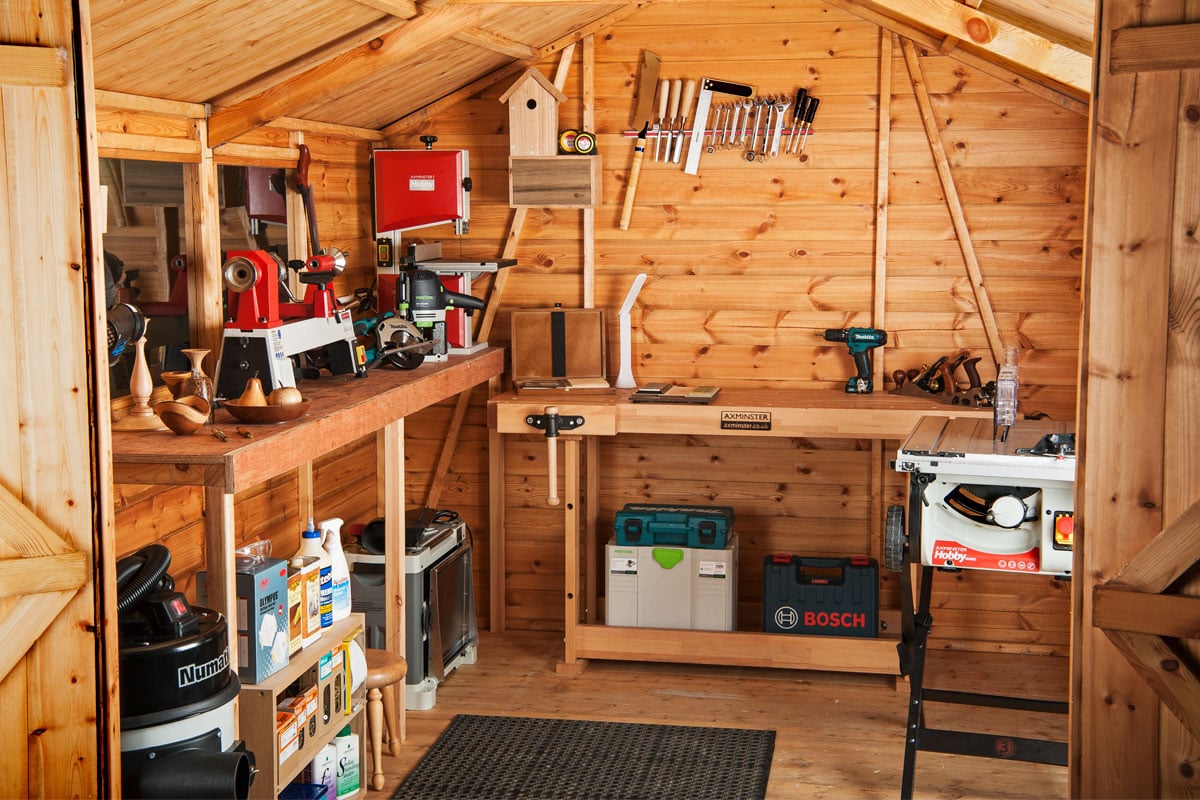Designing a Compact and Productive Woodworking Shop

Creating Your Dream Workshop, Space-Saving Style
So, you’re dreaming of a woodworking shop, but space is tight? Don’t worry, you’re not alone! Many woodworkers find themselves working in smaller spaces, but that doesn’t mean you can’t create a productive and efficient workshop. In fact, designing a compact and productive woodworking shop can be incredibly rewarding. Think of it like a well-organized toolbox – every tool has its place, and everything is within easy reach. Let’s dive into how you can achieve this woodworking nirvana.
Smart Space Planning: The Foundation of Your Compact Workshop
Before you even think about buying a single tool, planning is key. Think of it as the blueprint for your woodworking empire. Measure your space meticulously – every inch counts! Consider the flow of your work. Where will you receive your materials? Where will you cut, shape, and finish? How will you store everything? A well-planned layout will minimize wasted steps and maximize your productivity. Sketch out your ideas on paper, perhaps even trying a few different arrangements before settling on the perfect one.
Vertical Space: Your Secret Weapon
In a compact workshop, vertical space is your best friend. Wall-mounted storage solutions are essential. Think pegboards, shelves, and hanging cabinets. These will keep your tools organized and easily accessible without taking up valuable floor space. You’d be surprised how much you can store vertically! Consider using the space above your workbench as well. Hang often-used tools overhead, keeping your workbench clear for project work.
Multi-Functional Furniture: The Swiss Army Knife of Workshops
Maximize the functionality of your furniture. Think about a workbench with integrated storage – drawers, shelves, even a built-in vise. A mobile workbench on wheels can be moved easily to adapt to different projects and even allow you to open up space when not in use. Consider using folding workbenches or sawhorses which can be stored compactly and pulled out when needed.
Smart Tool Selection: Quality over Quantity
It’s tempting to accumulate lots of tools, especially when you’re starting out. However, in a small workshop, quality over quantity is crucial. Invest in high-quality, versatile tools that can perform multiple functions. A good combination square can act as a ruler, marking gauge and depth gauge, saving you the space of purchasing separate tools. A quality hand plane can often replace the need for certain power tools, saving both space and cost. Think about the projects you’ll likely be working on and prioritize the tools that will be most frequently used. Don’t be afraid to sell or give away tools you seldom use.
Designing a Compact and Productive Woodworking Shop: The Importance of Organization
Organization is paramount in any workshop, but especially in a compact one. A cluttered workshop is a frustrating workshop. Develop a system for storing your tools and materials that makes sense for you. Label everything clearly. Use clear storage containers to keep things neat and easy to find. Regularly declutter and clean your workspace to maintain efficiency and prevent accidents. A tidy workshop is a safe and productive workshop.
Power Tool Considerations
Power tools are essential in woodworking, but they take up valuable space. Choose smaller, more portable models whenever possible. Consider tools with dust collection systems to maintain a clean work environment. Think about whether you truly *need* all those power tools or if you could perhaps get by with fewer but higher quality ones. Sometimes, investing in a few high-quality tools that serve multiple purposes is more efficient than accumulating a plethora of specialized (and space-consuming) tools.
Dust Collection: Breathe Easy
Wood dust is not just a nuisance; it’s a health hazard. Even in a small workshop, effective dust collection is critical. Consider a shop vacuum with a hose, a dust collector, or even a combination of both depending on your budget and needs. Keeping your shop clean and free of dust promotes better health and minimizes the need for intensive cleaning sessions.
Lighting: Illuminating Your Work
Good lighting is vital for accuracy and safety. Install bright overhead lighting and task lighting to illuminate your workbench. LED lighting is energy-efficient and produces minimal heat.
Designing a Compact and Productive Woodworking Shop: Safety First
Safety should always be your top priority, regardless of the size of your workshop. Ensure adequate ventilation, wear appropriate safety gear (eye protection, hearing protection, dust masks), and follow safe operating procedures for all your tools. A cluttered space increases the risk of accidents, so keeping it organized and clean is paramount for safety.
Embrace the Constraints: Creativity in a Small Space
Designing a compact and productive woodworking shop is a challenge, but it’s also an opportunity to get creative! Think outside the box. Use vertical space, choose versatile tools, and organize your shop efficiently. The result will be a workshop that’s both productive and aesthetically pleasing – a testament to your ingenuity.
Conclusion
Designing a compact and productive woodworking shop is achievable with careful planning, smart choices, and a commitment to organization. By maximizing vertical space, choosing versatile tools, and maintaining a clean and efficient workspace, you can transform a small area into a highly productive woodworking haven. Remember, it’s not about the size of your shop, but the efficiency of your workflow. freeslots dinogame
Frequently Asked Questions
- Q: What’s the most important aspect of designing a compact workshop?
A: Careful planning and efficient space utilization are crucial. Measuring your space meticulously and designing a layout that minimizes wasted movement is key to success. - Q: What tools are essential for a small woodworking shop?
A: Focus on versatile tools like a good quality hand saw, hand planes, chisels, and clamps. Power tools should be selected carefully, prioritizing multi-functional options. - Q: How can I maximize storage in a small workshop?
A: Utilize vertical space with wall-mounted shelves, pegboards, and hanging cabinets. Employ multi-functional furniture with integrated storage, and optimize the space above your workbench. - Q: How important is dust collection in a small shop?
A: Extremely important! Wood dust is a health hazard. Invest in a good dust collection system (shop vacuum, dust collector, or both) to keep your air clean and your lungs healthy. - Q: Can I still do serious woodworking in a compact shop?
A: Absolutely! With careful planning and efficient techniques, even a small shop can be highly productive. Focus on your workflow, tool selection, and organization to maximize your output.

















